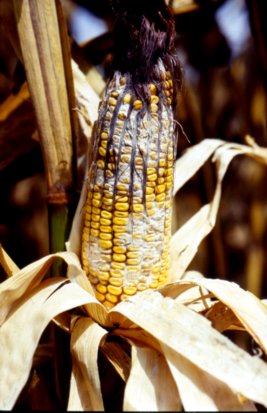Among the fungi that are moulding agents of agri-food products, there are species belonging to the genera of Aspergillus, Penicillium, Fusarium and Claviceps that arise justified apprehension for food safety because are capable to produce mycotoxins, which are responsible to elicit strong intoxication in livestock and humans. It is well known that not all species of these genera are mycotoxin producers, and that within a toxigenic species there is a wide variability of toxin synthesis. The correct evaluation of such biodiversity, which is strongly needed in order to estimate the real mycotoxigenic risk connected with a moulded crop or agri-food product, led to constitute a large culture collection of toxigenic strains as genetic source and to develop earlier, faster and more reliable molecular diagnosis to better discriminate the strains. The ISPA collection (ITEM Collection) has about 5,000 toxigenic strains of phytopathological, mycotoxicological and agri-food interest, associated with the production of more than one hundred metabolites with different biological activities. Since 1997, the collection is joined to the World Federation for Culture Collection (WFCC) and the European Culture Collection Organization (ECCO), and its catalogue is available on the web (http://www.ispa.cnr.it/Collection ). The traditional identification based on morphological fungal features, which seems no longer suitable for modern needs, is integrated and progressively substituted by advanced molecular techniques aimed to obtain molecular markers, such as probes of nucleotidic sequences (Taqman) and species-specific primers for diagnoses of toxigenic fungi, as well as to study the variability of the whole fungal genome (AFLP) for more selective discrimination. Both, the collection and the application of molecular techniques were accomplished and refined during the collaboration to numerous international programmes, culminated with the ISPA coordination of COST Action 835 (Agriculturally important toxigenic fungi - Eur-19220) with the participation of 24 Countries, and of the Detox-Fungi European Project (QLK1-CT-1999-01380), which is included in an EU Cluster Structure (Mycotoxin Prevention Cluster) grouping others 9 EU Projects, with ISPA sub-projects in 7 of them. The availability of such new resources is of great importance because they ensure in perspective, together with the acquisition of new basic mycological knowledge regarding the epidemiology, environmental adaptation, host and/or medium relationships, philogenic and evolutionary aspects, useful biotechnological applications. Among such new possibilities, it is worthy of note that is being printed the ISPA patent on the possibility to discriminate by species-specific primers the strains of F. verticillioides, F. proliferatum and F. subglutinans showing a different toxigenic profile, which represent three anamorphic forms of Gibberella fujikuroi, the dangerous moulding agent of maize ear.
Immagini:

